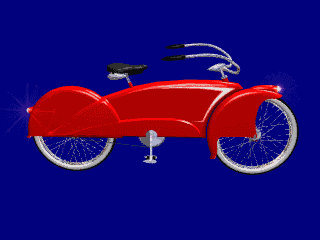

Bicycles made at the Olney plant were manufactured so poorly that some Midwestern bike shops refused to repair them, claiming that the bikes would not stay fixed no matter how much labor and effort was put into them. Manufacturing quality as well as the technical standard of the Roadmaster bicycle line - once the pride of the company - had fallen to an all-time low. BMX bikes, mopeds and exercise bicycles were introduced in the 1970s.Īfter two decades of consistent growth, the AMF Wheel Goods Division stalled under the long-distance management of a parent company bogged down in layers of corporate management and marginally profitable product lines. The company produced over 100,000 miniature Mustangs for Ford Motor Company late in the 1960s. Products manufactured there were children's vehicles, sidewalk bikes, toy autos, tricycles, garden tractors, seat cars and wagons and playground equipment. In 1962, the company moved its operations to Olney, Illinois, where it built a new factory on a 122-acre (0.49 km 2) site that would remain the company's principal bicycle manufacturing location into the 1990s. As two-wheeled bicycles increased in popularity a new plant was built in Little Rock, Arkansas in 1951. As demand for bicycles continued to expand, the company found the need for a new manufacturing facility to keep up with demand. Taking advantage of the increase in its target markets in the aftermath of the baby boom, AMF was able to diversify its product line, adding exercise equipment under the brand name Vitamaster in 1950. The new plant was heavily automated and featured more than a mile of part conveyor belts in six separate systems, including an electrostatic spray painting operation. In 1953, after a labor strike, AMF moved bicycle manufacturing from the UAW-organized plant in Cleveland, Ohio to a new facility in Little Rock, Arkansas. In 1950, after purchasing the Roadmaster line of children's and youth bicycles from the Cleveland Welding Company, AMF entered the bicycle manufacturing business with its newly formed AMF Wheeled Goods Division. Roadmaster Bicycles were first introduced by the Cleveland Welding Company in 1936. The engines are two-stroke and the bikes can be shifted between pedal bike and moped. They are choppy at first but then run fine once warmed up. Both are currently in running condition and will do about 20 mph. This is a no reserve auction for two AMF Roadmaster Mopeds/ Motor assisted bicycles. 2 AMF Roadmaster moped bikes running NO RESERVE. In 1997 the Roadmaster bicycle division was sold to the. Roadmaster acquired Company, whose history dates back to 1889. A new bicycle production plant was built in Effingham, Illinois to keep pace with the growing demand. Helped by the increasing popularity of Mountain Bikes, Roadmaster experienced a 72% increase in bicycle sales in 1993.

AMF ROADMASTER BICYCLE SERIAL NUMBERS FREE
However, to make bikes as easy as possible to find, feel free to enter all numbers. In this picture 200910427-2A is a manufacturer number and not a serial number. Okay, fine, so maybe there are a few bikes without serial numbers, but this is rare and typical only on hand made bikes or really old bicycles. Sort: Year ↑ Year ↓ Posted ↑ Posted ↓ Comments ↑ Comments ↓ Faves ↑ Faves ↓ Company ↑ Company ↓ Type ↑ Type ↓ Model ↑ Model ↓ + Post new. AMF stands for American Machine and Foundry. Price new: $94.95 (five speed), $76.AMF didn't make just bikes, they made everything, they made boats to tennis rackets and a lot more. Besides the very early Stingrays the Krates are the most popular Stingrays among collectors. Krates in decent, original condition such as this one are fairly rare. Schwinn also offered a variety of dealer accessories including a windshield, a checkerboard mirror, and even a bat holder. There are a variety of configurations for the Krates including coaster brake options (starting 1970) and the rear disc brake option available in 1972-3. The last Krates (Orange, Apple, Lemon Peeler, & Pea One year only 1971 Grey Ghost is considered the rarest Krate because it, too,ĭid not sell well.

AMF ROADMASTER BICYCLE SERIAL NUMBERS SERIES
The Krate series continued in 1969 with theĪs a Diamond Jubilee model in 1970 the Cotton Picker never sold well and wasĭiscontinued after the 1971 model year making this the second rarest Krate. Later in the year the Lemon Peeler and Apple Stingray evolution with a springer front fork, 5 speed, shock absorber seat, racing Schwinn Orange Krate was introduced in 1968 and represented the zenith of


 0 kommentar(er)
0 kommentar(er)
